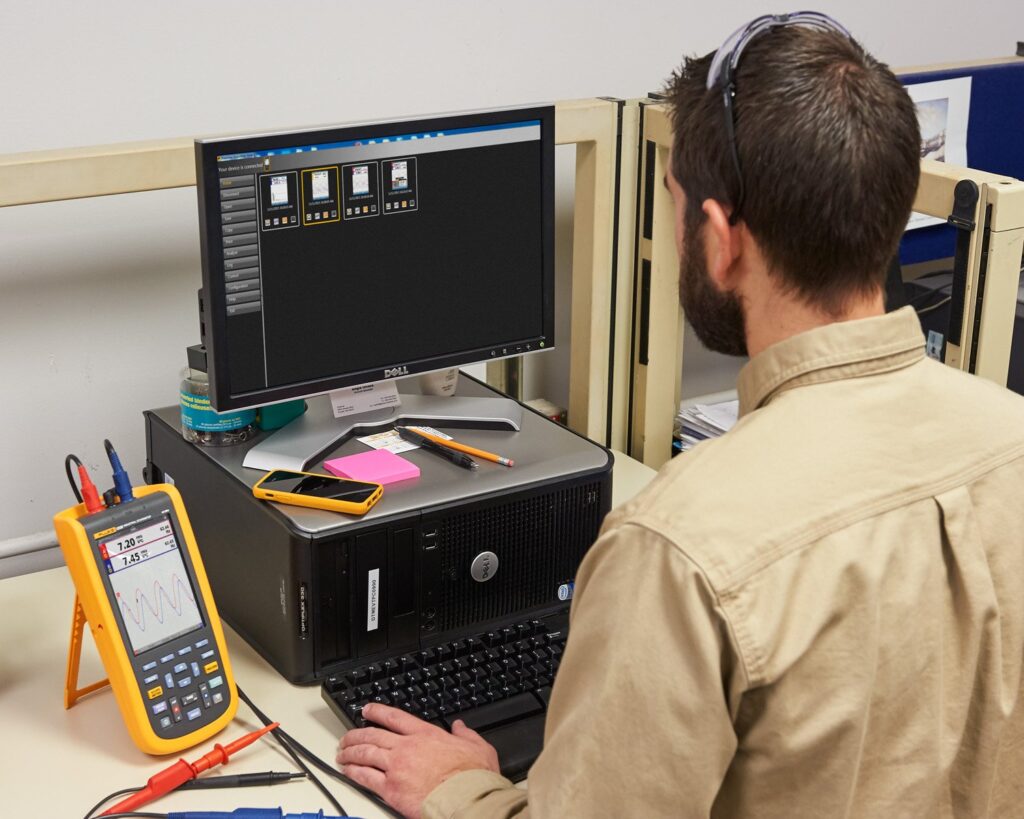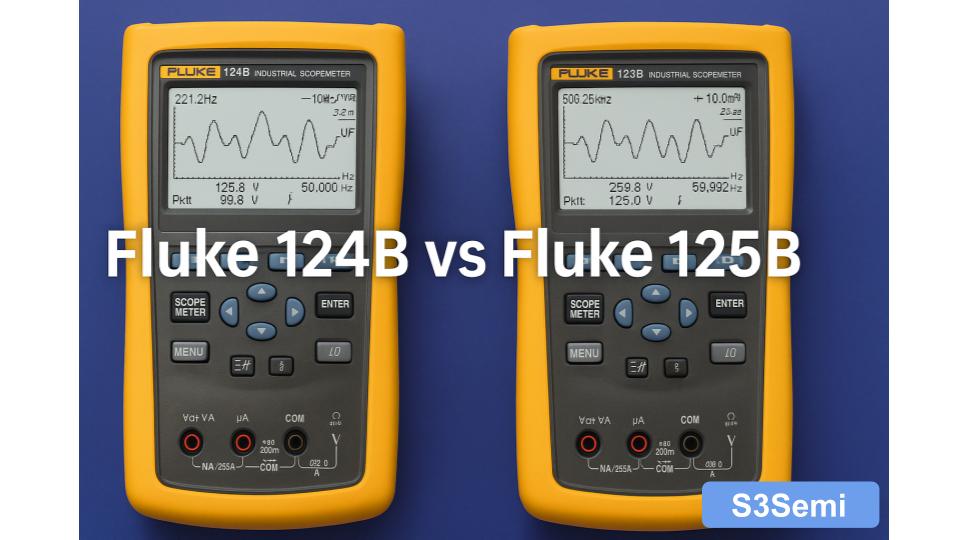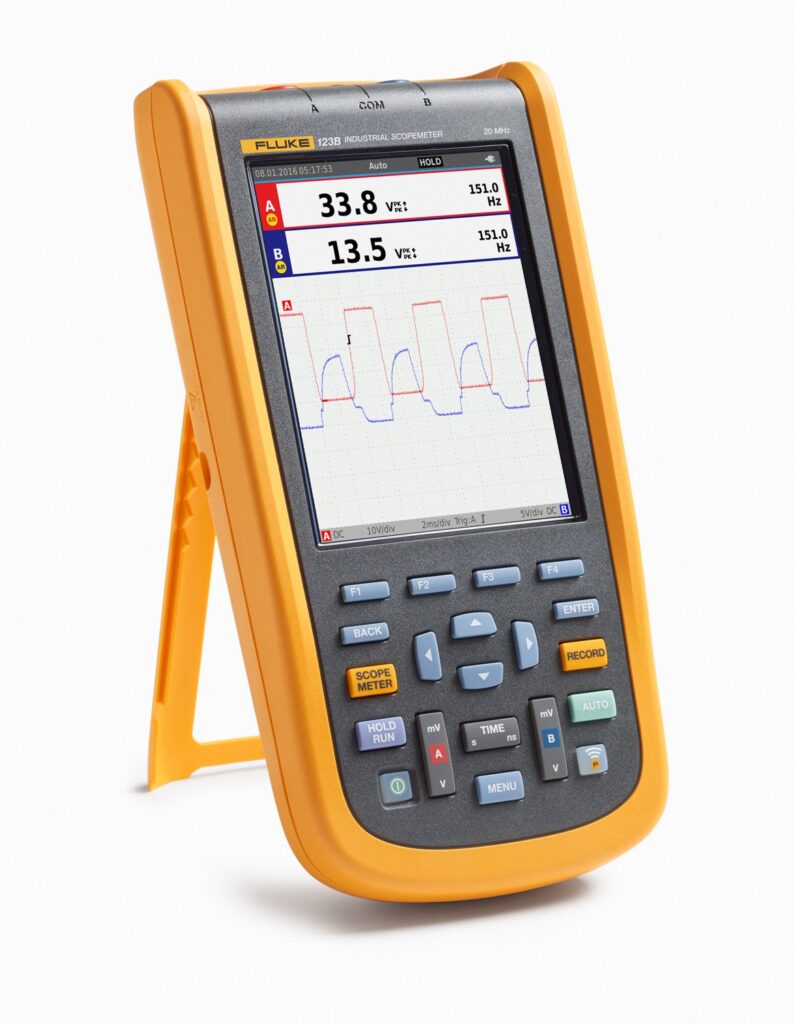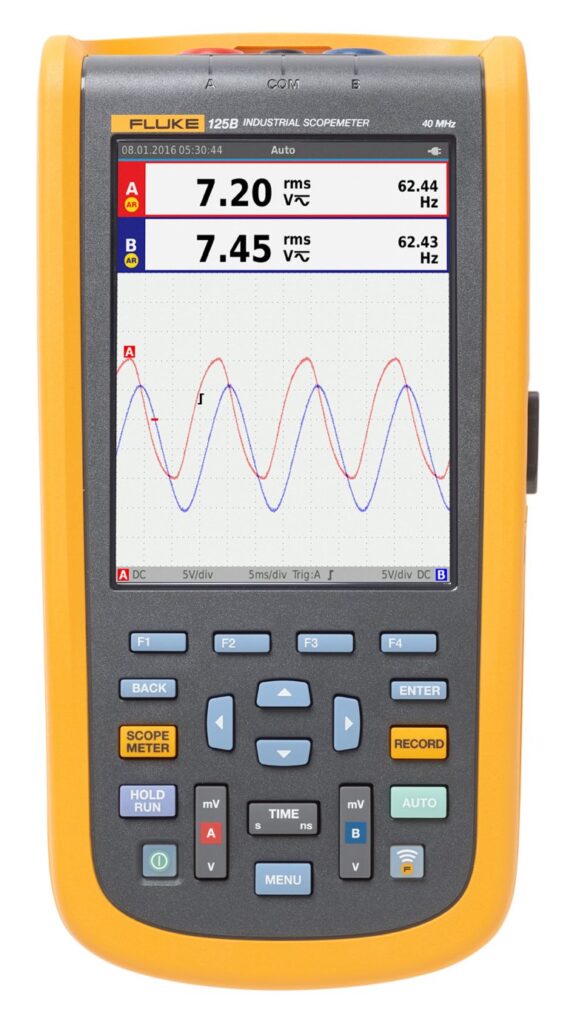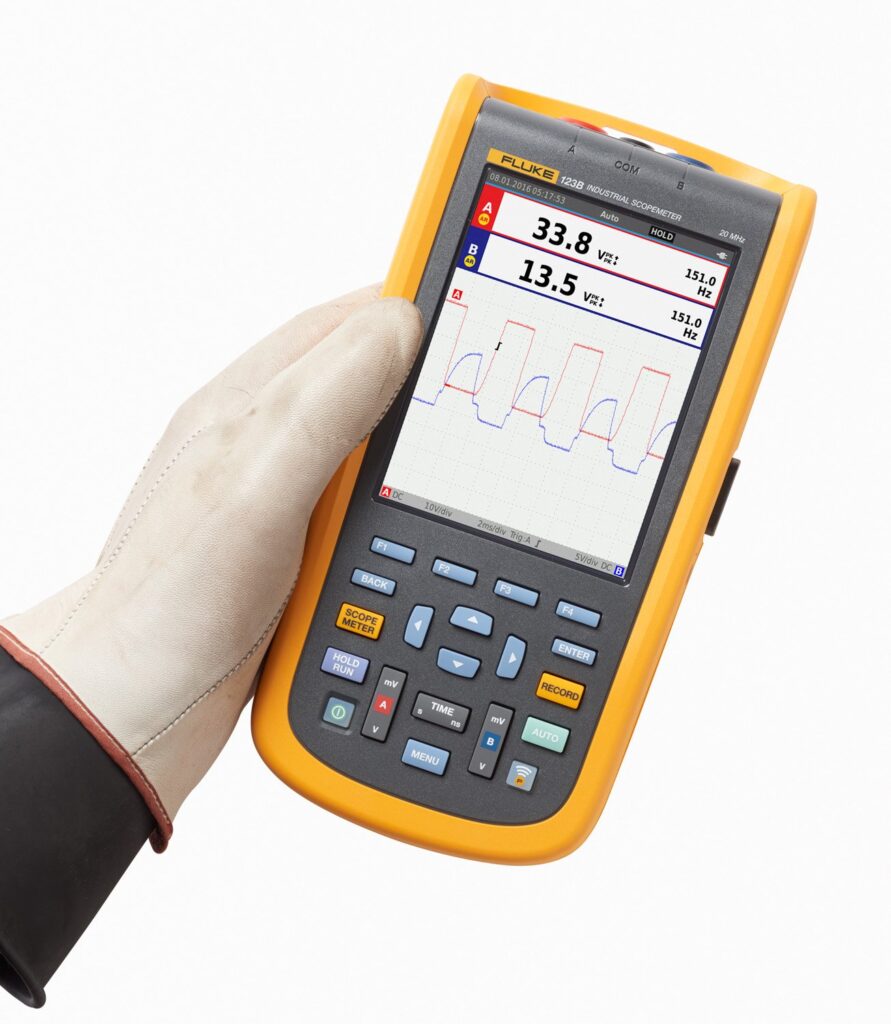The Fluke 124B and Fluke 125B are both part of Fluke’s Scopemeter Industrial Series, combining the functionality of an oscilloscope, multimeter, and recorder in one rugged handheld device.
🏷️ Fluke Multimeter Deals ⭐⭐⭐⭐
These instruments are designed for field service technicians, industrial electricians, and engineers troubleshooting complex electrical and electromechanical systems.
While they look similar on the outside, the 125B adds advanced features that make it better suited for more detailed diagnostics. Let’s explore the key differences, specifications, and which one you should choose.
🔍 Overview of the Fluke 124B
The Fluke 124B is the entry model in the ScopeMeter 120B series, offering a powerful combination of dual-channel oscilloscope, multimeter, and recorder functions.
Key Features:
- Dual-input 40 MHz oscilloscope
- 2-channel True RMS multimeter
- Recorder for trend analysis and intermittent fault capture
- Connect-and-View™ automatic setup for instant waveform capture
- Recorder Event Detect for logging signal irregularities
- USB and Wi-Fi connectivity (via optional FlukeView® software)
- Rugged handheld design with CAT III 1000V / CAT IV 600V safety rating
Best For: Electrical technicians and engineers who need quick waveform visibility and reliable diagnostics in the field without advanced analysis tools.
⚙️ Overview of the Fluke 125B
The Fluke 125B includes all the features of the 124B plus advanced diagnostic and analysis capabilities – making it the more comprehensive tool for troubleshooting industrial automation systems.
Key Features:
- Dual-input 40 MHz oscilloscope (same as 124B)
- 2-channel True RMS multimeter
- BusHealth™ Test for industrial fieldbus analysis (CAN, LIN, RS-232, etc.)
- Power and harmonic measurements
- Cursor and waveform math functions for in-depth analysis
- ScopeRecord™ mode for capturing transients over long periods
- CAT III 1000V / CAT IV 600V safety rating
Best For: Professionals in process control, automation, and industrial environments who need to evaluate both electrical performance and communication bus integrity.
📊 Comparison Table
| Feature | Fluke 124B | Fluke 125B |
|---|---|---|
| Oscilloscope Bandwidth | 40 MHz | 40 MHz |
| Channels | 2 | 2 |
| True RMS Multimeter | ✅ Yes | ✅ Yes |
| Connect-and-View™ | ✅ Yes | ✅ Yes |
| Recorder Function | ✅ Yes | ✅ Yes |
| BusHealth™ Test | ❌ No | ✅ Yes |
| Power & Harmonic Analysis | ❌ No | ✅ Yes |
| Waveform Math | ❌ No | ✅ Yes |
| Cursor Measurement | ❌ No | ✅ Yes |
| PC Connectivity | USB / Wi-Fi (optional) | USB / Wi-Fi (optional) |
| Safety Rating | CAT III 1000V / CAT IV 600V | CAT III 1000V / CAT IV 600V |
| Target User | Electrical / maintenance technicians | Automation & process engineers |
| 💳 Pricing | 💲Check Price | 💲Check Price |
✅ Pros and Cons
Fluke 124B Pros
- Compact and rugged for field use
- Easy automatic setup with Connect-and-View™
- Great for general electrical troubleshooting
- More affordable than the 125B
Fluke 124B Cons
- Lacks advanced analysis features (no BusHealth or harmonic measurement)
- Limited for communication system diagnostics
Fluke 125B Pros
- Adds BusHealth™ test for fieldbus and serial systems
- Includes power analysis and harmonic measurement functions
- Waveform math and cursor analysis improve detail visibility
- Excellent all-in-one tool for industrial automation
Fluke 125B Cons
- More expensive
- Slightly steeper learning curve for new users
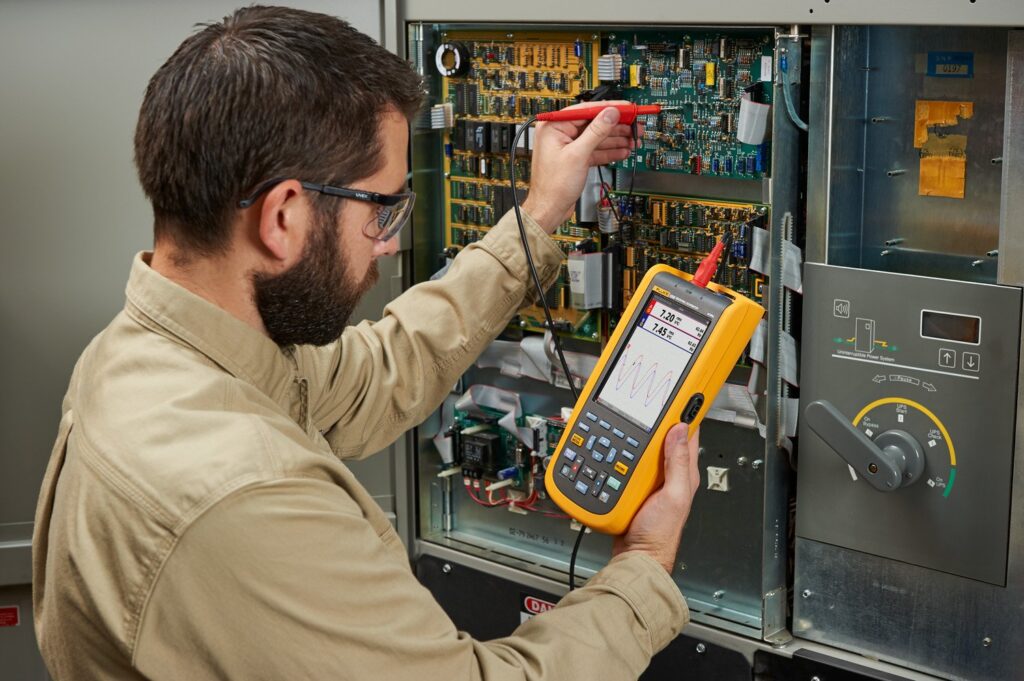
🏆 Verdict: Fluke 124B or Fluke 125B?
Both the Fluke 124B and 125B deliver professional-grade performance for field testing and troubleshooting — but they cater to different users.
- Choose the Fluke 124B if you need a reliable, easy-to-use ScopeMeter for basic waveform diagnostics, voltage testing, and maintenance work.
- Choose the Fluke 125B if you work with industrial communication systems, automation controls, or need power and harmonic analysis capabilities.
👉 In short:
- Fluke 124B = Best for general electrical maintenance and quick waveform testing.
- Fluke 125B = Best for advanced diagnostics, automation, and industrial process troubleshooting.
